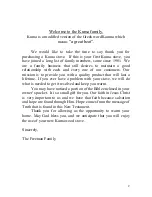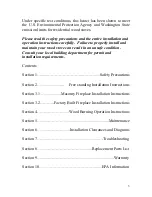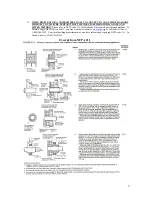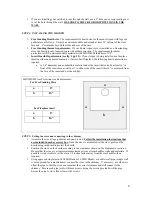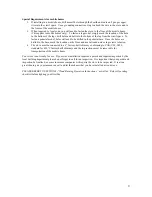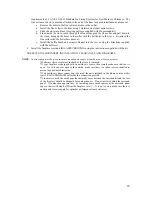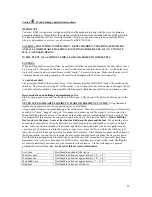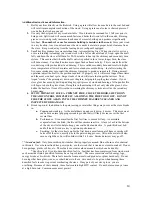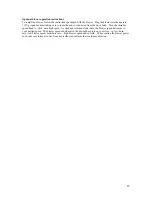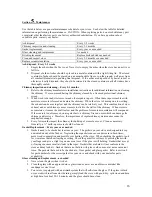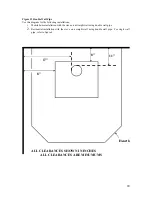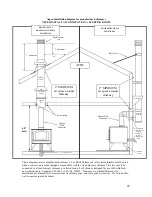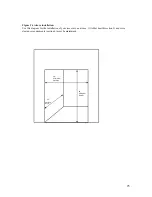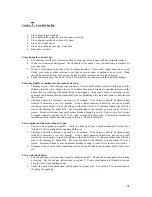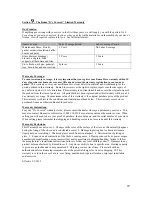
14
Additional instructions and information.
1.
Build your fires directly on the firebrick. Using a grate will allow too much air to the coal bed and
will result in incomplete combustion of the wood. Using a grate can also leave charred pieces of
wood after the fire has gone out.
2.
Use only the best grade of dry wood available. Wood should be seasoned for 1 full year prior to
being used. Split wood will season much faster and better that wood left in the rounds. Burning
green or wet wood greatly increases the chance of creosote build up and produces significantly
less heat.
The number 1 cause for creosote build up is moisture in the wood.
Store your wood
in a dry location.
Any wood stored near the stove needs to maintain proper listed clearance from
the stove. Keep wood away from the loading door or ashpan if equipped.
3.
Small hot fires produce less creosote than long, low smoldering fires. When you start your stove
or are re-kindling (reloading) your wood stove with a full or sizeable load of wood, open the draft
fully and burn the stove at full burn for 20-30 minutes to heat up the chimney and secondary burn
system. This ensures that when the draft control is pushed in for a lower, longer burn, the stove
will burn cleaner. You should notice more upper firebox flame activity. This is smoke from the
wood mixing with pre-heated air and burning. This is called secondary burn and results in higher
stove temperature at lower burn rates and less soot and creosote build-up. Just after starting the
fire, some smoke may occur until the chimney warms up to produce some draft. During normal
operation, adjust the draft to the position required. If properly set, it will assure longest burn times
and the most even heat cycle. Larger loads of wood will create the longest burn times. Your
Aspen “washes” the primary air down over the glass, helping to keep the glass cleaner. If your
stove glass has a smoky build-up, adding dry, split pieces of wood and burning a full-open hot fire
will begin to burn the glass clean. Doing this in the morning will not only clean the glass, but re-
builds the heat level for an efficient burn, warming the chimney system as well as the secondary
burn system.
4.
IF YOU THINK YOU HAVE A CHIMNEY FIRE, CLOSE THE DOOR, SHUT DOWN
THE AIR CONTROL COMPLETELY ALLOWING THE FIRE TO GO OUT. DO NOT
FIRE THE STOVE AGAIN UNTIL THE CHIMNEY HAS BEEN CLEANED AND
INSPECTED FOR DAMAGE.
5.
Break in period. In addition to the paint curing, several other things may occur as the stove breaks
in.
a.
Popping and creaking: As the metal heats up and cools down, it moves. This movement
can cause a normal popping or creaking sound that will likely decrease over the first
several fires.
b.
Performance: It is normal for the first few fires to seem a bit lazy. As moisture
evaporates from the brick, the fire will become more active. A layer of ash in the bottom
of the stove will also help to keep your coal bed hot and active. A good thick coal bed
and full load of wood are key to optimum performance.
c.
Smoking: As the stove heats up for the first time, a small amount of haze or smoke will
bake off of the stove, mostly due to the paint curing process. Oils on the metal will also
casue a slight haze, but will subside within 2-3 hours. Smoke detectors may go off.
**A word on fuel-
Only burn cordwood or lumber that is properly seasoned. Do not burn coal or charcoal
in this unit. Never burn railroad ties, power poles, or other wood that is treated or creosote-soaked. Do not
burn garbage, plastic, rubber, etc. These fuels can create carbon monoxide which can be deadly.
*Densified fuel
- It is ok to burn densified fuel (i.e. fuel that has been compressed from wood waste
such as sawdust into a densified form such as a log or brick). These are sometimes called energy logs,
energy bricks, or bio-bricks. These fuels must be from natural wood products or plant based only. Do not
burn logs that have glues, waxes, or other binders in them. Care needs to be given when burning these
densified fuels in order to prevent overheating the stove. If any part of your stove glows, you are
overfiring. Because of their density, these fuels contain high BTU content. Do not burn too many at once
at a high burn rate. Common sense must prevail.


